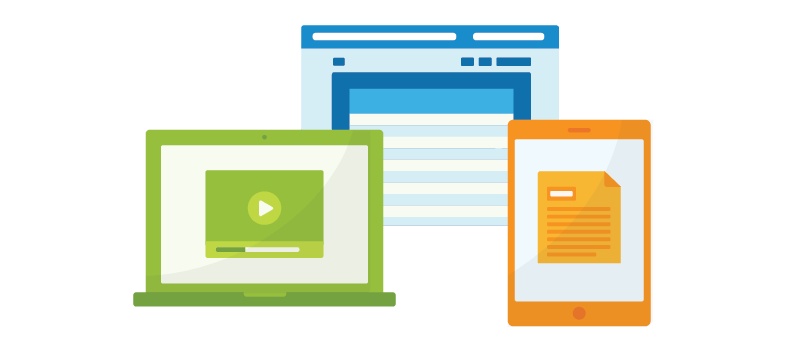For companies to thrive and grow, they must prioritize customer experiences. That includes many different touchpoints and interactions, especially with omnichannel options. As customers demand faster, more convenient service, you’ll need to focus on how to optimize the customer journey touch by touch.
To do this, you’ll need a customer-centric culture, effective workflows, and technology to support this. Let’s dive into how your organization can reimagine the customer journey in a dynamic world.
What Is Customer Journey Optimization?
First, let’s start with the basics. Customer journey optimization describes identifying and analyzing current user experiences with your brand. Those can occur in many different channels and at various stages of the buying process.
For example, new customers go through onboarding, a unique scenario happening at the beginning of the customer relationship. Whereas support ticket communications can arise at any time during the customer lifecycle.
When seeking to optimize any process or strategy, you’ll need to start with an assessment.
Assessing Your Existing Customer Journey
The first step to optimization is the evaluation of customer interactions. Consider all the touchpoints during the customer journey:
- Pre-purchase: What channels or mediums are available to customers before they make a purchase?
- Purchase: How do they receive the product or service, and what do customers need in terms of touchpoints to achieve success?
- Post-purchase: What are customer options for service, communication, and information?
Using these three divisions, document the most common customer journeys. Keep in mind that it’s rarely a linear path from interest to sale to loyalist. Customers may spend much time pre-purchase or during the purchase before moving forward. Thus, customer journeys are flexible, and you have to predict somewhat what the customer will do.
But how well do you know your customer?
Defining Your Ideal Customer
To improve the customer experience, you’ll need to truly understand your audience — what challenges, motivates, and concerns them. Along with how they make buying decisions and what they seek to resolve, you also must make assumptions about how they’ll interact with your brand through all three phases. You don’t need to base this purely on intuition. You have data to support it. That could include:
- Demographic information
- Marketing interactions (i.e., website visits, email opens, etc.)
- Purchase data (i.e., the channel they used, what they bought, etc.)
- How they interact post-purchase (i.e., analytics from your contact center software)
All this data provides a good foundation for mapping out how your ideal customer moves through the process. That gives you a better comprehension of how to improve and optimize.
Optimizing Touch by Touch
There will be many opportunities to optimize as you build out your plan to improve touchpoints and deepen relationships. You can also test new strategies and tactics to improve results.
Here are some key areas for optimization to consider.
Personalizing Across the Customer Journey
Personalization of marketing communications and touches can help you win business. That’s because buyers respond to messaging or offers relevant to their needs. Look at these statistics that confirm this:
- 72 percent of consumers only engage with marketing messages if they are custom.
- Personalization can lift revenues by 5-15 percent.
- 51 percent of companies deploying personalization across channels experienced an increased ROI of up to 300 percent.
- 87 percent of consumers agree that personally relevant content positively influences how they feel about a brand.
When you take the time to craft out personalized touches, it can pay big dividends. You’ll gain new customers and retain existing ones. So, how does this play out tactically?
- Personalized email: Segment your lists to ensure that recipients receive the most meaningful content.
- Website content: Use cookies to identify the user when they land on your site. One simple way to do this is by location so that what customers see is specific to where they are.
- CRM (customer relationship management) platform access: This is your repository for customer details. Ensure that your contact center software can integrate with your CRM. Then, anyone fielding a call, email, or chat from a customer can quickly locate information for a more personalized experience.
Providing Multiple Ways to Connect
Your customers crave ease when getting support or finding answers to questions. Most also want to engage in different channels. More are leaning toward digital channels, but voice is still important.
The key to omnichannel options is to use a platform that aggregates voice, email, and chat into one queue. It streamlines the intake process and ensures that customers can connect on their terms.
You’ll also need to make sure customers know they have options. Make these visible on your website, and email new customers about all the ways they can reach you.
Omnichannel support can be a significant driver of customer satisfaction, and your contact center agents will appreciate it, too.
Outbound Touches Keep Engagement Strong
In addition to any marketing outbound communications, you can use dynamic notifications. This capability is part of contact center software and allows you to send outbound calls, text messages, and email. These critical touches can make a difference in a customer’s experience and expectations. Some examples include:
- Appointment, scheduling, or reservation reminders
- Deliveries on the way
- Special promotions or upselling
- Payment due
- Installation updates
- Outages
They proactively inform your customers, which should improve your relationship with them.
Optimizing the Customer Journey
The customer journey isn’t a straight line. It’s a living process that changes. Be ready for this with the right strategies and technology in place. When it comes to customer communication and touches, you’ll want robust contact center software as the heart.
Learn more about how to use tech to foster customer engagement by checking out Intermedia Contact Center today.
April 26, 2022
Explore other posts on these topics: Contact Center




